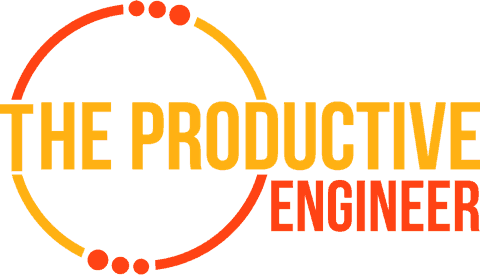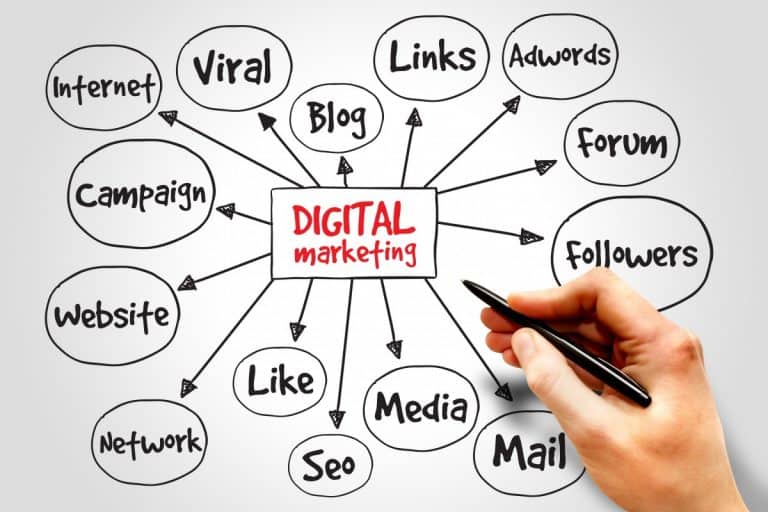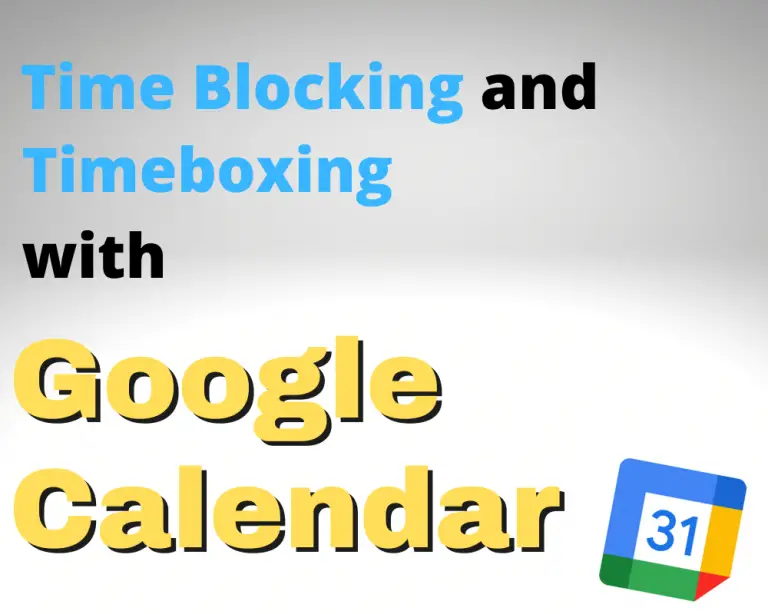Definitive Guide to Being More Productive
We all want to be more productive. There are millions of books out there to tell us how to be more productive or why we should be more productive. There are things in our life that we want to get done but, whatever reason, we just don’t. But being more productive is easier said than done.
So how do we become more productive? Listed below are techniques and tips that can help you become more productive:
- Ask Yourself Why Are You Not Productive And BE HONEST
- Write Out What You Want and Why You Want It
- Create Core Areas of Your Life to Focus On
- Build Out Short and Long Term Goals
- Take Each Goal and Brainstorm the Steps Needed to Get There
- Create a List of Granular Tasks for Each Goal
- Check Your Task List and Decide What You Are Committed To Doing and What You Are Not
- Use a Timer App to Track How Long Your Tasks Actually Take To Get Done
- Schedule Tasks in a Task Manager
- Find an Accountability Partner
- Create a Tracking System to Track Your Progress on How Productive You Are Being
If you are looking to learn more, you should check out SkillShare. SkillShare is an online learning site with courses on just about everything including how to study and prepare for exams. One of my favorite courses on SkillShare is the Productivity Masterclass by Thomas Frank. This course is really good at helping you to create a productivity system to help you get the things you need to get done completed consistently and efficiently.
For more information on SkillShare, please click the link below:
Why Are You Not Consistently Productive?

This is the first place you should start. Before you can change something about yourself you need to be honest: why are you not consistently productive? The key here is, to be honest. It is very easy to talk about all the things that come up in your day-to-day life that prevent you from being productive.
However, in order to change your life, or in this case, become more productive, you need to change your behavior. The way you change your behaviors by being honest with yourself, determining what you really want, and most importantly, why do you want it. It is easy to want to be more productive but why do you want to be more productive? What is the thing that you’ll get from being more productive?
The truth is, while you will no doubt achieve goals by being more productive, it is really about the feeling you get when you’re being productive. We all have slacked off and regretted it but have we ever regretted pushing through and getting the work done? I would venture that the answer for you is no because, for me, I have never regretted pushing through and getting the work done.
Being Consistently Productive is Hard Work!

Becoming more productive is hard work. That’s a fact that you can’t get past. The key is to get you to work productively consistently. Dino Babers, the head football coach at Syracuse University, has a saying that he uses with his players:
“Be Consistently Good, Not Occasionally Great”
I love this quote. It really encapsulates the idea that you need to be consistent in your approach to getting things done. I know that we could feel really productive when we have one day off massive productivity. However most times, we fade off into lesser effectiveness. It is undeniably better to go about your business in a consistent way to produce the results that you want.
You have to do the work but if you’re truly committed to getting the work done, there are techniques you can use to speed up the process. The question is do you really want it?
How to Beat Procrastinating to be More Productive
Procrastination is something we all do, it’s part of the human condition. That said, do you need to take an accounting of how much time you spent procrastinating versus how much time you spent actually getting things done.
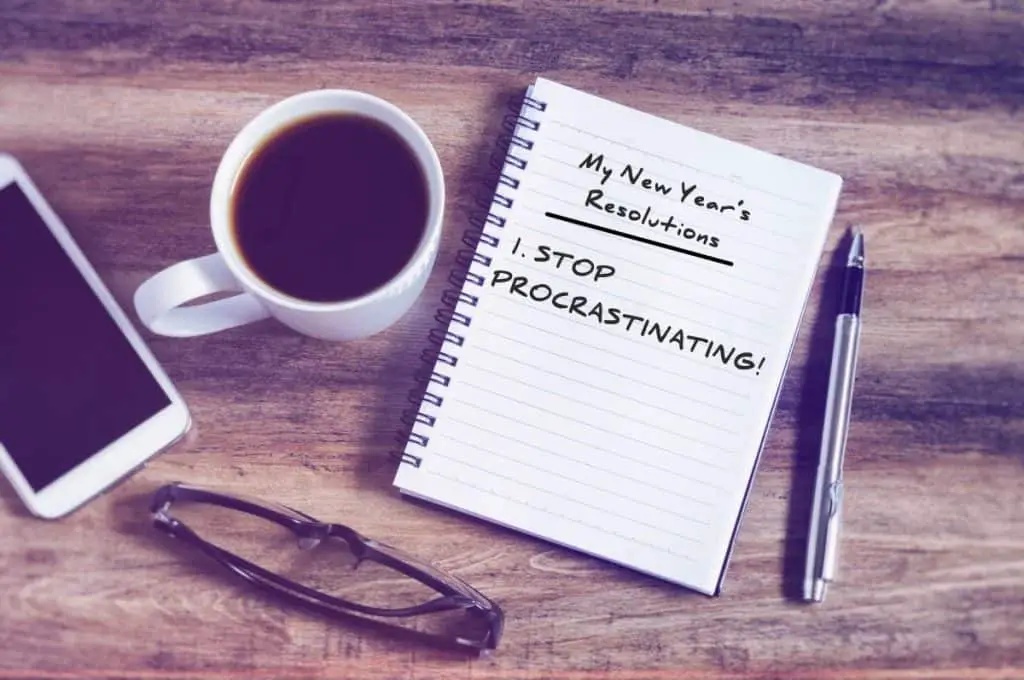
So how do you get better at avoiding procrastination and getting things done? The first thing you need to do is to list the most common activities you engage in when procrastinating. Are you watching a bunch of videos on YouTube? Playing the latest call of duty on your PS4 or Xbox? Mindlessly scrolling through Twitter or Instagram? I am not here to judge you as I spent a lot of time (embarrassingly so) on all of the above. If you don’t acknowledge what you’re doing and how much you’re doing it, then you will never change it.
I know from personal experience that I tend to underestimate the amount of time I spend doing fun activities and overestimate the amount of time I spend doing productive activities. By tracking how much time you spend on procrastination activities, you will come to realize that you were wasting a ton of time.
Balance Productivity with Fun, Non-Productive Activities
To be clear, I am not saying to give up YouTube or video games or social media. That would be unrealistic and any attempt to do so would likely result in a massive relapse at some point and future to your old ways. Rather, I am suggesting that just like you schedule your productive time you should schedule your unproductive time. Eliminating all the things you like to do is not a good recipe for success.

Create a list of things you want to do. Once you have that list, estimate how much time each task will take and be very conservative in your estimation. If for example, you believe that a task will take you 20 minutes, put down 40. As I stated earlier, we tend to overestimate or ability to get things done. Doubling your time estimate ensures you have the cushion to work with that you will need, especially when you’re just getting started.
Write Out What You Want and Why You Want It
Before you can get productive, you need to know what you want. The way to determine whether you really want it is to ask yourself a simple question: why do I want it? Is it the prestige of the accomplishment? Is it the thing or things that you’ll get as a result of doing the job? Or is it the feeling that you will get when you have pushed yourself and achieved more than you thought you could? Only you can answer this question for yourself.
Create Core Areas of Your Life to Focus On
Once you have written out what you want and why you want it, the next thing we need to do is to map them into core areas of our life that we want to focus on. This mapping will help you categorize all the things under a small number of umbrella areas.

For example, you might have one area that is labeled career. Another area might be labeled family while a third area might be labeled health. The labels and how many of them you have is up to you but I recommend that you do not have more than four areas.
The reason why I say no more than four areas is that we need to focus. Once you get beyond for areas, you will lose focus and the idea of managing all these areas will become too daunting. Better to have a small handful of areas to manage.
Build Out Short and Long Term Goals
Now that we have our areas defined, we need to build out these areas with our short term and long term goals. These goals should map directly to the area that we are assigning them to. The goals should have a definite start and end dates. Specificity is essential in this process. If you are not specific, you’ll find that your goals never get done as they will be too vague and seem unreachable.
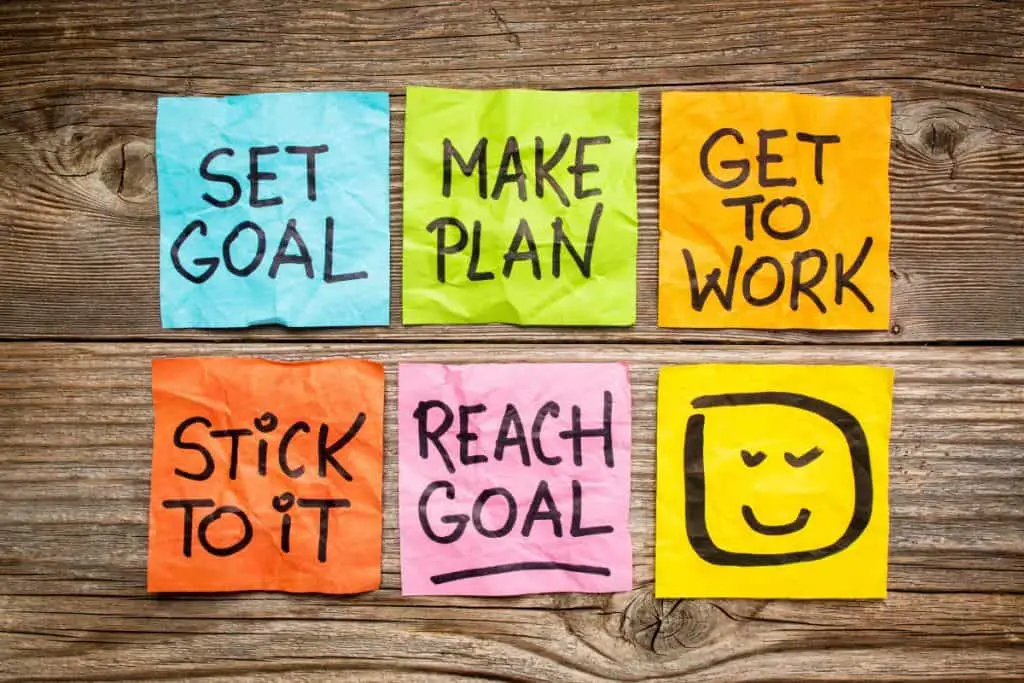
Deadlines, especially imminent deadlines, work as a focusing agent that forces us to buckle down and get the essential tasks done needed to meet our goals. Each area should have at least one short term and long term goal. Short term goal should be completed within three months. A long-term goal should take place sometime after three months but before a full year.
I know a lot of people like to have three or five-year plans, but I find that anything beyond a year is pure conjecture. The fact is we have no idea what we will want a year from now in most cases.
Of course, there are exceptions to this such as getting a four-year degree, becoming a doctor, or saving for a house. However, many of your goals will fit within the one-year mark in my opinion.
Take Each Goal and Brainstorm the Steps Needed to Get There
Now that we have our goals, the next step is to get granular. This means we need to create sub-tasks for each of the goals. A task is a singular entity that is very basic. It should be broken down into its smallest form. The task should be single activity. An example would be set up an appointment with an expert on cybersecurity.
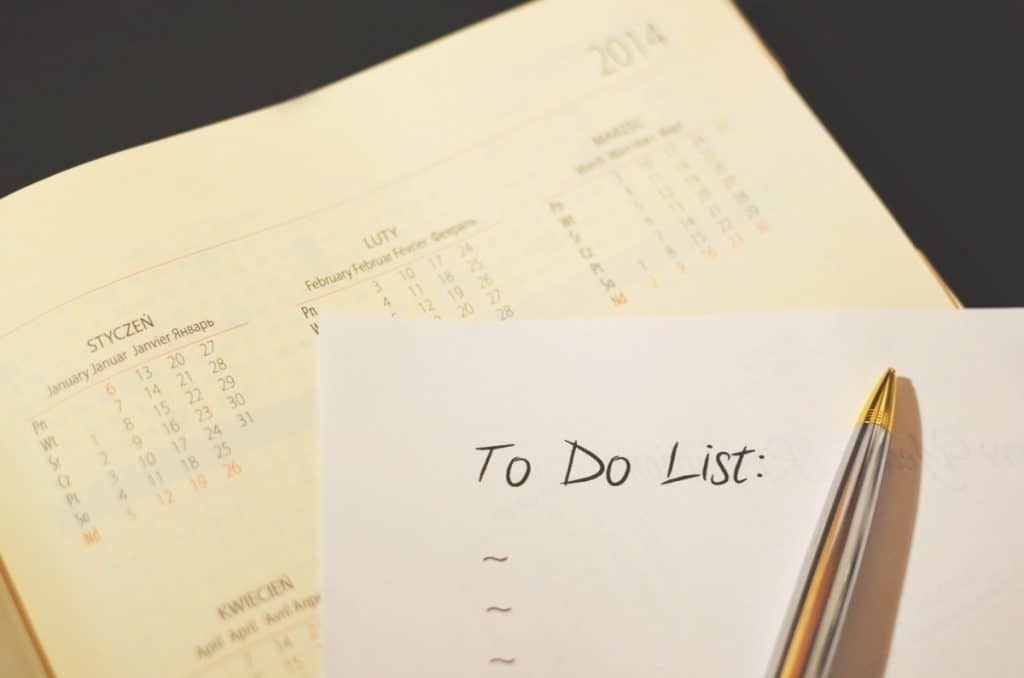
Do this exercise for all of your goals. Take your time in doing this exercise as this is the key to achieving your goals and being productive. If your tasks are too generic or open-ended, this will cause mental friction and make it less likely that you will complete it.
A To-Do List and a Don’t-Do List
The next step is to look at our tasks and see which ones are actually worth doing. I know when I start tracking what I’m doing, I tend to load up my to-do manager with a ton of tasks regardless of whether I actually plan on doing them or not.
That is why the first thing you should do is to evaluate your list and split it into two lists:
- A To-Do List
- A Don’t-Do List
You may have heard of the saying “don’t try to boil the ocean.” That phrase first to about trying to do too much and not getting anything done. If you don’t narrow your focus you won’t see the forest from the trees. You’ll be so busy trying to tick-off tasks that you won’t actually know whether it was worth doing or not. Some of your tasks are simply not worth doing or are not nearly as important as other tasks that you should be doing.
Efficiently doing things that you should not be doing does not make you effective or productive. Doing the things you should do efficiently is what makes you effective. This may sound like a slight difference but it makes all the difference in the world. No matter how fast you do something that doesn’t matter, it’s still doesn’t matter.
That is why having a don’t-do list is just as important as a to-do list. You need to narrow your focus to things that really matter, that really make a difference.
Use a Timer App to Track How Long It Takes To Complete Your Tasks

The easiest way to know how much time it takes for you to get things done is to time yourself. Timer apps come in a variety of flavors anywhere from the default timer app on your phone to Pomodoro apps. The app you use is less important than the actual act of using it. The key is to track your time by logging it.
Table of Productivity Timer Apps
| App | Platforms | Links |
| Timer | iOS | part of iOS |
| Clock | Android | part of Android |
| Be Focused Pro | iOS | App Store Link |
| Visual Timer | Android | Play Store Link |
| Due | iOS | App Store Link |
| Goodtime | Android | Play Store Link |
Once you have picked an app to use as your timer, you need to actually use it. Commit to tracking everything you do or, at least, the time you spend doing your productive tasks and the time you spend doing the tasks that you do when you are procrastinating.
I recommend creating a spreadsheet with a list of your tasks, the type of task it is, it how long it took you to complete it. You may be asking yourself “why am I doing this? “The answer is that you need to understand how long it takes you to complete your tasks. Having a historical record of your tasks and how long it took will give you both a historical view of your performance but, more importantly, will help you get better at estimating your time and how long it takes to get things done.
Learning how to estimate your time well is an essential skill to learn in order to be productive. You need to be able to map out your time. Once you have a good understanding of how long it takes you to do things, creating your schedule becomes much easier.
Use A Task Manager to Manage Your Tasks
Now that we have our tests and we know roughly how long it’ll take to do them, we need to manage them. I highly recommend using a task manager. Task managers or applications that allow you to manage all your tests and schedule them accordingly. Apple has a built-in to-do manager called Reminders and Google has Google Keep for android users.

If you are an android user and interested in learning how to use Google Keep, check out my beginners guide to using Google Keep at the link below:
A Beginner’s Guide to Using Google Keep – The Productive Engineer
These two built-in to-do managers are more than enough for most people. If, however, you find yourself chafing at the limits of these applications, there are several alternative options out there. Some more popular To do managers include Todoist, Things, and Omnifocus.
If you were interested in learning more about Todoist or Things, please check out our articles are those applications at the links below:
Ten Great Tips for Todoist – The Productive Engineer
How to Organize Todoist Guide – The Productive Engineer
How to Create a Template in Todoist – An Illustrated Guide – The Productive Engineer
How to Use Things for Mac – The Productive Engineer
How to Email Items to Things 3 – The Productive Engineer
Find an Accountability Partner
Accountability is essential for sticking to being productive. It is really hard sometimes to keep ourselves accountable as our minds are really good at rationalizing. We tell ourselves “we worked hard all week we deserve a break” or “a couple of minutes of Call of duty won’t hurt my productivity“. Of course, a couple of minutes of Call of Duty doesn’t really exist as every game I’ve ever played has lasted at least an hour (but, then again, that just might be me).

This is where in accountability partner could be really handy. Having accountability partner forces you to be accountable for all the work you do or don’t do. Knowing that you have to meet with somebody or just talk to them and tell them what you did or didn’t do for the week can really be beneficial.
I know that a lot of you might be feeling a little uncomfortable right now. It is one thing to try to make ourselves more productive, but it’s quite another we are pulling in other people to try to help us do it. If you are introverted this will be a difficult task, there is no denying that.
If you can manage it, I highly recommend that you find an accountability partner. It doesn’t have to be super complicated. Just a 15 minute call or a chat over coffee to state what are you gonna work on for the week. The next week, you have another 15-minute meeting where you go over your progress. Knowing that you have to meet with somebody will focus you as you don’t wanna lose face with that person.
The main reason why accountability partners work so well is that, while it’s easy to rationalize to ourselves, it’s much harder to rationalize to somebody else.
Create a Tracking System to Track Your Progress on How Productive You Are Being
This last step is essential. You must track your progress. Peter Drucker once said, “what gets measured, gets managed“. (Source) I need a tracking system helps you to see where you are at a given point on your journey toward your goals. Many times we will veer off course I need to course correct. Sometimes, as we pursue a goal, we realize that that goal is no longer what we really want and we need to change our goal.

So how do we measure our progress? I highly recommend that you set up a spreadsheet that has all the categories, milestones and information needed for you to adequately track how well you are working towards your goals. The great thing about spreadsheets is that their table-like structure allows you to lay out your tasks and goals in a way that allows you to measure them effectively.
This does not mean that your spreadsheet have to be super complicated. In fact, for most people, it’s better to keep it relatively simple as it makes it easier to maintain the spreadsheet. The nice thing about spreadsheets is that it is relatively easy to go from simple to more advanced in a gradual way.
Can You Be Productive All The Time?
Speaking of time, can we actually be productive all the time? I know from reading this article that you may feel like it’s possible but it’s really not. No one is productive all of the time. Not me, not you not anyone. The idea is to build a system that allows you to become more productive than you currently are. A system that will allow you to get back on track when not if you go off the rails. The idea that we could be productive all the time is simply not realistic.

There are going to be days when you wake up and have zero motivation. While many days you will be able to push through it to get things done (especially if you implement some of the techniques in this article), there will be days when you will not. This is reality and it’s better to face it than to delude ourselves into believing that we are productivity machines.
Resources to Help You Become More Productive
| Resource | Type | Link | Description |
| Thomas Frank YouTube Channel | YouTube | Link | Tom has amazing videos that are extremely detailed and well produced. Highly- recommend you subscribe to his channel. |
| Matt D’Avella YouTube Channel | YouTube | Link | Another great channel with awesome tips and tricks to help you get things done efficiently. |
| Deep Work | Book | Link | An amazing book that details the importance of focusing on the hard, important tasks and eliminating the simple and unimportant |
| The 4-Hour Work Week | Book | Link | A book whose title implies work avoidance is really about productivity and being effectively efficient |
| The Productivity Show | Podcast | Link | One of the best podcasts on how to be productive out there! This podcast is by the fine folks at Asian Efficiency. |
Summary
Being more productive is a goal all of us strive to achieve. It is important that this goal is a journey, not a destination and that you will have ups and downs along the way. The key is to keep pushing and to be as consistent as possible. I hope you enjoyed this article. Good Luck!
Want More Tips and Tricks? Subscribe to our Newsletter!
If you haven’t already subscribed, please subscribe to The Productive Engineer newsletter. It is filled with tips and tricks on how to get the most out of the productivity apps you use every day. We hate spam as much as you do and promise only to send you stuff we think will help you get things done.
Check Out Our YouTube Channel!
We have a YouTube channel now and we are working hard to fill it with tips, tricks, how-tos, and tutorials. Click the link below to check it out!
Check out our Resources Page
Check out our resources page for the products and services we use every day to get things done or make our lives a little easier at the link below:
